| System |
Nautilus System Version 1.0
|
| Keyboard |
73-Key, Natural Touch Semi-Weighted
|
| Synthesis Method |
HD-1 High Definition Synthesizer (PCM) HD-1
AL-1 Analog Synthesizer (Analog Modeling) EXi (Expansion Instruments)
CX-3 Tonewheel Organ (Tonewheel Organ Modeling)
STR-1 Plucked String (Physical Modeling)
MS-20EX Component Modeling Technology (Analog Modeling)
PolysixEX Component Modeling Technology (Analog Modeling)
MOD-7 Waveshaping VPM Synthesizer (VPM Synthesis)
SGX-2 Premium Piano (Acoustic Piano)
EP-1 MDS Electric Piano (Electric Piano)
|
| Polyphony |
HD-1: 140 Voices
AL-1: 80 Voices
CX-3: 200 Voices
STR-1: 40 Voices
MS-20EX: 40 Voices
PolysixEX: 180 Voices
MOD-7: 52 Voices
SGX-2: 100 Voices
EP-1: 104 Voices
|
| Preset PCM Memory |
Preset PCM 314 MB (ROM 1505 Multi-Samples, 1388 Drum-Samples)
Built-In Expansion PCM Libraries
EXs1 ROM Expansion
EXs4 Vintage Keyboards
EXs5 ROM Expansion 2
EXs8 Rock Ambience Drums
EXs9 Jazz Ambience Drums
EXs18 Korg EXs Collections
EXs21 Italian Piano
German Mono Grand
Upright Piano
C3 (Prepared)
PCM RAM Capacity: About 2 GB |
| Wave Sequences |
Preload: 187 Wave Sequences
User Memory 598 Wave Sequences
Support for Stereo Multi-Samples, Synchronization of Individual Notes, and Tempo-Based Settings
|
| Combination |
Number of Timbres: 16 Maximum
Master Keyboard Functionality: Keyboard and Velocity Splits, Layers, and Crossfades up to 16 Programs and/or External MIDI Devices
Advanced Vector Synthesis: Control Oscillator Volumes and Synthesis and Effects Parameters via Tempo-Synchronized Vector Envelope
Quick Layer/Split Function
|
| Drum Kits |
Assignable Stereo/Mono Samples with 8 Velocity Zones per Oscillator (with Crossfade Functions)
|
| Programs/Drum Kits |
User Memory Programs: 2560 (1792 or More Preloaded [896 or More HD-1 + 896 or more EXi])
User Memory Combinations: 1792 (480 or More Preloaded)
User Memory Drum Kits: 264 (78 or More Preloaded) 256 GM Level 2 Preset Programs + 9 GM Level 2 Drum Preset Programs
|
| Set List |
Number of Set Lists/Slots: 128 Set Lists, 128 Slots per Set List
Each Set List Provides a 9-Band Graphic EQ, and a Tone Adjust Function that Allows Program Settings to Be Adjusted
Hold Time Setting for Smooth Sound Transition (SST) Supported for Each Slot
|
| Sampling |
System: Open Sampling System (resampling, In-Track sampling)
Bit/Frequency
RAM: 16-Bit / 48 kHz Stereo/Mono Sampling
Drive: 16 or 24-Bit / 48 kHz
Sampling Time
RAM: Depends on the Amount of Available PCM RAM
Drive: Maximum of 80 Minutes Stereo (879 MB: 16-Bit)
Samples: 16,000 Samples/4000 Multi-Samples (128 Indexes per Multi-Sample) Formats: Korg Format, AKAI S1000/S3000 Data (with Advanced Program Parameter Conversion); SoundFont 2.0, AIFF, and WAVE Formats
Editing: Time Stretch, Time Slice, Crossfade Loop, and Other Standard Editing Features
|
| Effects |
Insert Effects: 12, Stereo In / Stereo Out
Master Effects: 2, Stereo In / Stereo Out
Total Effects: 2, Stereo In / Stereo Out
Timbre/Track EQ: One 3-Band EQ for Each Timbre/Track
Effect Types: 197 Different Effects Types (Any Effect Type May be Used for Insert, Master, or Total Effects)
Modulation: Dynamic Modulation and Common LFO
Effects Control Busses: Stereo Side-Chaining for Compressors, Gates, Vocoders, Etc
Effect Presets: 783, Maximum 32 per 1 Effect (Preset User)
ipt> |
| Arpeggiator |
Arpeggiator: One module in Program Mode, Two Modules in Combination and Sequencer Modes
Arpeggio Pattern: 2048 Presets, 1536 Users (96 Come Preload)
Controllers: On/Off, Latch
|
| Drum Track |
Preset Patterns: 718 Preset (Common with the Preset Patterns of the MIDI Sequencer)
User Patterns: 1000 Patterns (Patterns Created in SEQUENCER Mode Can be Converted to Drum Track User Patterns
Controllers: Drum On/Off
Trigger Mode/Sync/Zone Settings can Be Specified
|
| Sequencer |
Step SequenceUser Patterns: 4 Patterns (Drum Track Cannot be Used Simultaneously)
Sequencer/HDR Tracks: 16-Track MIDI Sequencer + 16-Track Hard Disk Recorder + Master TrackNumber of Songs: 200 Songs
Resolution 480 Ticks per 1/4-Note
Tempo: 40.00 to 300.00 (1/100 BPM Resolution)
Maximum Memory: 400,000 MIDI Events (with MIDI Data Only) or 300,000 Audio Events (with Audio Data Only)
MIDI Tracks:16 Tracks Plus the Master Track 718 Preset / 100 User Patterns (per Song) 18 Preset / 16 User Template Songs
Format: Korg (NAUTILUS, KRONOS, OASYS) Format, SMF Formats 0 and 1
Audio Tracks:16-Track Playback, 4-Track Simultaneous Recording, WAV File Format 16-Bit / 24-Bit Automation: Volume, Pan, EQ, and Send 1/2 10,000 Regions (Maximum), Event Anchors, BPM Adjust Other Functions: RPPR (Realtime Pattern Play and Record): 1 Pattern Set per Song
|
| Media |
Load, Save, Utility, Data Filer Function (Save/Load MIDI System Exclusive Data), CD-R/RW (UDF Format read/write), ISO9660 Level 1
|
| Controllers |
Joystick, Switches 1 & 2 ARP
Controller Section: Switches:On/Off, Latch
Drum Controller Section: Switches: On/Off
|
| Display |
TouchView Graphical User Interface, 7.0″ / 177.8 mm TFT, WVGA (800 x 480 Dots), Adjustable Brightness
|
| Frequency Response |
20 Hz to 22 kHz ±1.0 dB, 10 Kilohms Load
|
| THD+N |
0.01% (20 Hz to 22 kHz ±1.0 dB, 10 Kilohms Load)
|
| Signal-to-Noise Ratio (SNR) |
95 dB Typical
|
| Dynamic Range |
95 dB Typical
|
| Crosstalk |
95 dB, at 1 kHz (Typical)
|
| Audio Outputs |
Analog:
Audio Outputs (Main) L/Mono, R
Audio Outputs (Individual) 1-4
1/4″ / 6.35 mm TRS Balanced
Output Impedance: 350 Ohms Stereo; 175 Ohms Mono (L/Mono Only)
Nominal Level: +4.0 dBu
Maximum Level: +16.0 dBu
Load Impedance: 600 Ohms or Greater
Master Volume Slider Controls Only Audio Outputs (Main) L/MONO and R
Headphones:
1/4″ / 6.35 mm Stereo Phone Jack
Output Impedance: 33 Ohms
Maximum Level: 60+60 mW at 33 Ohms
Master Volume Slider (Link with Audio Outputs Main)
Digital:
USB Type-B
Format: 24-Bit
Sample Rate: 48 kHz
2 Channels (Digital Output of the Same Signals as Audio Outputs (Main – L/Mono and R) |
| Audio Inputs |
Analog:
Audio Inputs 1,2:
1/4″ / 6.35 mm TRS Balanced
Input Impedance: 10 Kilohms
Nominal Level: Line +4 dBu (Analog Input Gain = Min), -36 dBu (Analog Input Gain = Max)
Nominal Level: Mic -22 dBu (Analog Input Gain = Min), -55 dBu (Analog Input Gain = Max)
Maximum Level: Line +16 dBu (Analog Input Gain = Min), -24 dBu (Analog Input Gain = Max)
Maximum Level: Mic -10 dBu (Analog Input Gain = Min), -43 dBu (Analog Input Gain = Max)
Source Impedance: 600 Ohms
Digital:
USB Type-B
Format: 24-Bit
Sample Rate: 48 kHz
2 Channels |
| Control Inputs |
Damper (Half Damper Supported)
Assignable Switch
Assignable Pedal
|
| MIDI |
In, Out, Thru: 3 x 5-Pin DIN
|
| USB |
USB Type-A: For Connection to QWERTY Keyboards, MIDI Controllers, Ethernet Adapters, and Storage Devices
USB Type-B
MIDI/Audio Interface
MIDI: 1 x (16 Channels) Input / 1 x (16 Channel) Output
Audio: 2 x Channel input / 2 x Channel Output
2 x USB 2.0 High-Speed Ports (Supports 480 Mbps) |
| Drive |
60 GB SSD
|
| Power |
Power Supply: AC Power Supply Terminal
Power Consumption: 40 W
|
| Dimensions |
48.3 x 15.2 x 4.6″ / 122.7 x 38.6 x 11.6 cm
|
| Weight |
32.2 lb / 14.6 kg
|

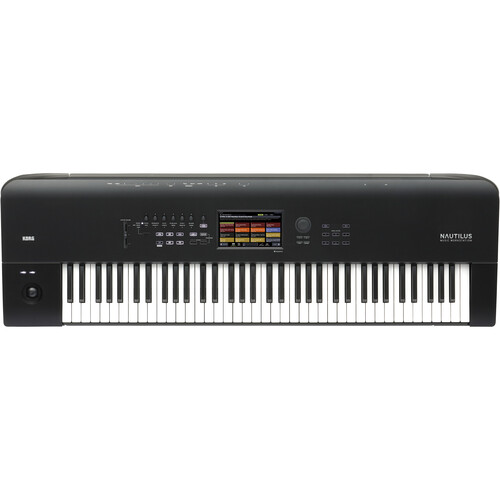

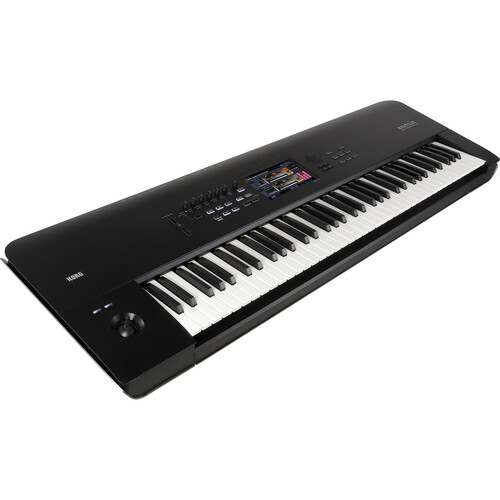
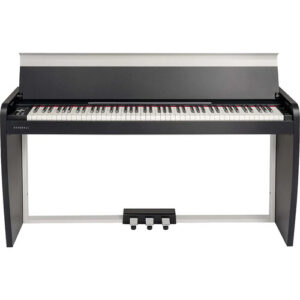
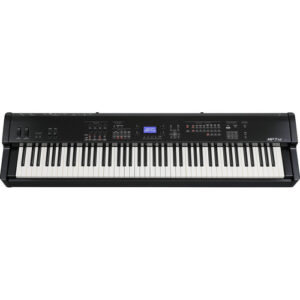
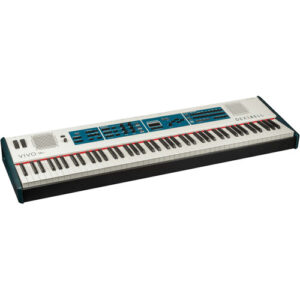
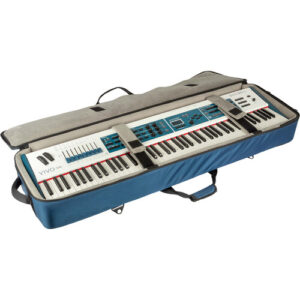

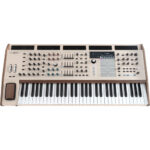
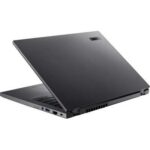
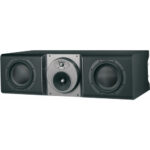
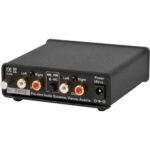
James –
According to Korg, the Nautilus is a re-imagining of the Korg Kronos Workstation, to include virtually the same sound set, a smaller control surface, slightly smaller screen and a scaled down Arpeggiator. Korg dropped the fully weighted keyboard on the 73 Key model and replaced it with a full size, semi-weighed synth action keyboard. My first impression was entirely positive, the weight saving was obvious, and the available sound set is the same nine (9) high quality sound engines available on the Kronos. The overall build quality was impressive, with several exceptions. The minimalist control surface should please most players, but not everyone. The Arpeggiator implementation come sans the KARMA software and while the loss of KARMA Arpeggiator functionality may put off some composers (like me), most performers will find the arpeggiator implementation on the Nautilus more than adequate. In the end I guess it depends on where you are coming from. If you have been using the Kronos and just want a lighter, more economical version of the Kronos, you may like what the Nautilus has to offer. Of course, it is not always that simple and it depends on the keyboard you are comfortable with. If you are looking for a hammer action keyboard, then the 88 Key model is the only choice. I liked the Synth Action keyboard allot, it is full size and plays well, but for my requirements it did not measure up. One other issue for me was the use a
cheap power switch. Not a big deal, but indicative of a lesser build quality that one might expect from Korg. All that said, I would highly recommend the Nautilus.
James –